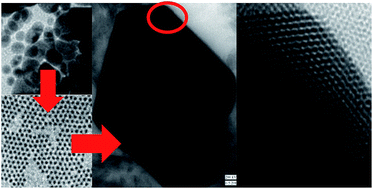Synthesis of monodisperse copper nanoparticles using a modified digestive ripening technique and formation of superlattices†
Abstract
In this work we demonstrate for the first time the synthesis of monodisperse copper nanoparticles (5 ± 0.9 nm) and formation of 2-D and 3-D superlattices. Superlattices have been formed using slow destabilization of the colloid. A confined environment of the emulsion droplet has been used to promote formation of 3D superlattices. It has been shown that very compact crystal like superlattices can be formed if the destabilized sol is aged for 10 days at −4 °C.


 Please wait while we load your content...
Please wait while we load your content...